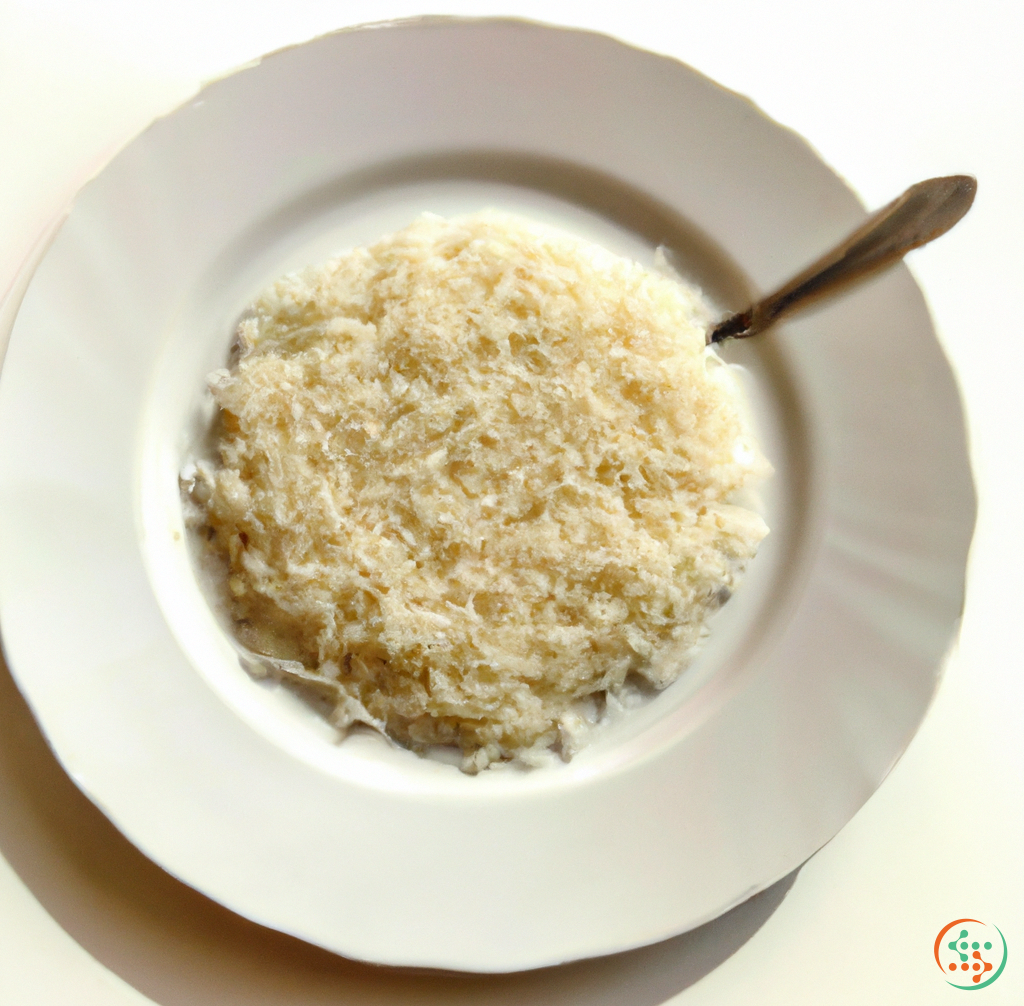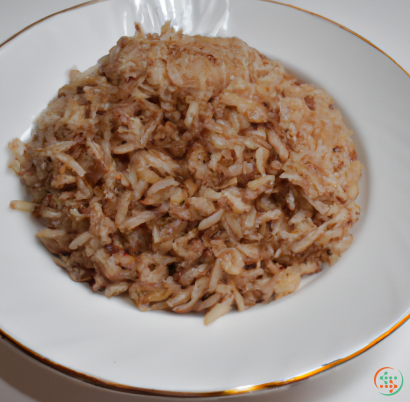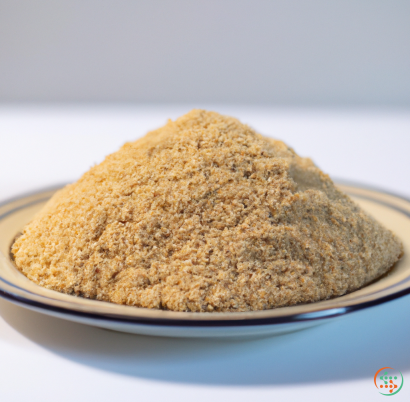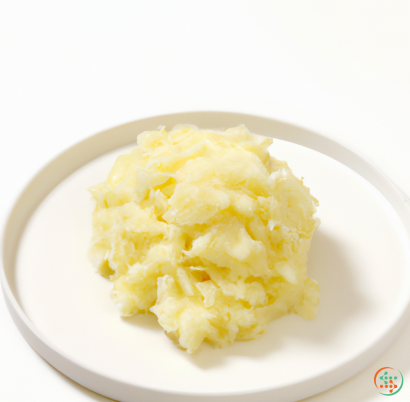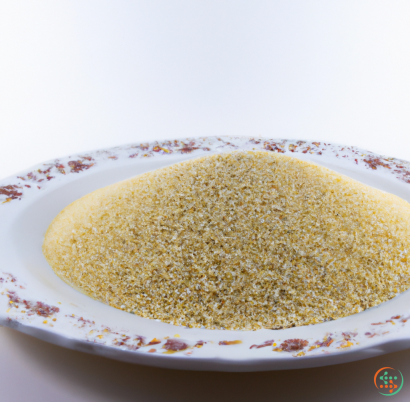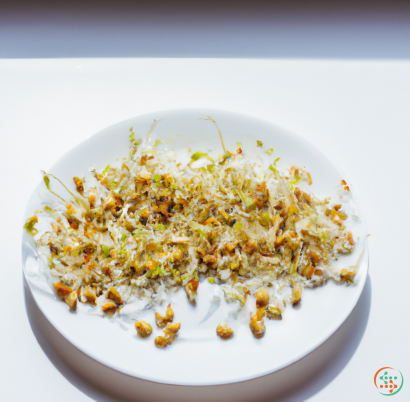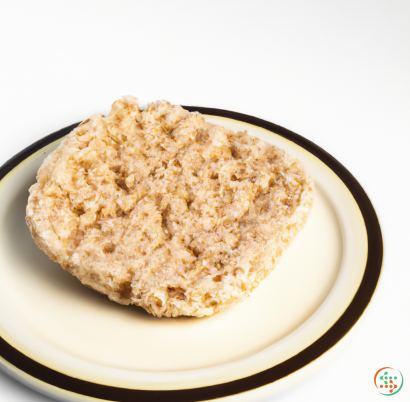Parboiled Rice
If you’ve never heard of Parboiled rice, then you’re in for a treat. Parboiled rice is a type of rice that is partially cooked before being dried, milled, and packaged for sale. This type of rice has some unique characteristics and offers many health benefits that make it a popular choice for home cooks and professional chefs alike.
What Is Parboiled Rice?
Parboiled rice is a type of rice that goes through a process known as “parboiling.” Parboiling is a steam-based method of pre-cooking and partially dehydrating the grains before milling and polishing. The goal of this process is to create grains that are easier and faster to cook. Also, the parboiling process enhances the nutritional value of the rice, making it more beneficial to consume than white or brown rice.
The process of parboiling involves soaking the rice in water and then steaming it at a high temperature. During this process, the rice changes in both texture and structure. The structure is stronger and the texture is less brittle than that of non-parboiled rice.
Parboiled rice also has a slightly nuttier flavor than regular white rice. This is attributed to the changes in its molecular structure as a result of the parboiling process. The nuttier flavor makes it a great addition to dishes like Indian curries and other savory dishes.
Benefits of Eating Parboiled Rice
The process of parboiling rice has several benefits. It increases the amount of vitamins and minerals, like iron, in the grains. This makes it a more nutritious choice than its alternatives. It also makes the grains more easily digestible, which is great for people with digestive difficulties. Additionally, parboiling makes the grains easier to cook and can reduce your cooking time by up to half.
Parboiled rice is especially beneficial for children, pregnant women, and the elderly. The high levels of iron and other essential vitamins and minerals makes it easier for these groups to get the nutrients they need. Moreover, its long shelf life makes it a great choice to have on hand in case of a power outage or other emergency.
How to Cook Parboiled Rice
Cooking parboiled rice is relatively simple. You’ll need to start by rinsing the grains to remove any excess starch. Then, add 1 cup of parboiled rice to 2 cups of water. Bring this mixture to a boil, reduce the heat to low, cover, and let simmer for 15-20 minutes. After that, turn off the heat and let the rice sit for an additional 5 minutes. Fluff the grains with a fork before serving.
The great thing about parboiled rice is that you can use it in almost any recipe that calls for rice. From risottos and stir-fried rice to rice salads, pilafs, and more, you can use parboiled rice to make a wide variety of dishes.
Conclusion
Parboiled rice is a great choice for anyone looking for a healthy, nutritious, and convenient grain. The process of parboiling partially pre-cooks the grains, making them easier and faster to cook while also increasing their nutritional value. It also has a slight nuttier flavor than regular white or brown rice, making it a great choice for dishes like curries, stir-fries, and other savory dishes. Plus, its long shelf life makes it a great choice for any emergency situation.
Parboiled Rice: From Field to Fork
Parboiled rice has been consumed and prized by cultures the world over for centuries, and it’s easy to see why. Boasting a unique flavor and texture that is distinctly different than its white and brown brethren, parboiled rice is often the favorite of experienced rice connoisseurs. For those new to the world of rice, parboiled is a delicious and nutritious introduction. To understand the origin and journey of this beloved grain, we will explore the process of how it is created, grown and delivered to your dinner plate.
The Parboiling Process
Parboiling is a method of pre-cooking rice that involves soaking, steaming, and drying the grains. Before being parboiled, the rice grains must first be soaked in water for 30 minutes to an hour. During this period, starch is leached from the germ to the endosperm, resulting in a soft outer layer of the kernel. This soak also hardens the bran layer, which helps to preserve the nutrients within the grain.
Next, the soaked grains are steamed under pressure to further soften them and drive off additional starch. The pressure from this process populates the bran layer and compacts the kernels, resulting in a grain that is larger and firmer than it was before the parboiling process began. Finally, the rice is dried to reduce the moisture content, allowing for storage and easier transport.
Growing and Harvesting
Parboiled rice, like all types of rice, is grown in paddy fields flooded with freshwater. While they can be grown in most parts of the world, the best variants are grown in regions like India or Thailand and are specific to regional tastes. During the planting season, farmers plant the seeds with a mechanical harvester or manually using a hoe. Once the seedlings have grown to maturity, the rice is harvested with a grain harvester.
After the rice has been harvested, it must be taken to a nearby threshing facility where the hulls and stalks can be removed. Once the excess material is gone, the grains pass through a de-stoning machine to filter out any stones that were harvested with the rice, as well as pieces of straw or husks. Then, the grains are transported to another facility to be parboiled prior to milling and packaging.
Mill and Pack
At the mill, the grains are run through a sorting machine that removes broken kernels and other debris. The clean grains are then conveyed to an infrared scanner that inspects each kernel and removes any that do not meet quality control standards. Finally, the grain is parboiled, cooled and run through a polishing machine to remove the bran layer. After this process is complete, the grains are ready to be sorted into size grades, packaged and shipped to retailers, restaurants, and consumers across the world.
Delivery to Your Plate
At this stage, the potential for the rice to become part of your dinner plate is nearly complete. After being processed and packaged, the grain is shipped to local stores, restaurants, and your kitchen. Depending on the grade of rice and where it is purchased, it may take anywhere from days to weeks to get it to your table.
When you open the bag, you will notice the rice grains have a distinct yellow or tan color due to the parboiling process. To prepare, it must first be rinsed to remove sediment and any remaining bran particles. Additionally, quality parboiled rice should exhibit a very subtle smell and a faint nutty sweet flavor, which adds to its unique culinary appeal.
After the grains have been rinsed and drained, they are ready to be cooked. For best results, it is recommended to use 1 cup of rice to 1.5 cups of water. Bring the liquid to a boil before lowering the heat and covering the pot. simmered for 15-20 minutes. After boiling and steam cooking, it will perfectly absorb additional flavors from sauces, vegetables, and meat to make a variety of dishes.
Final Thoughts
Parboiled rice is a delicious variant of this essential food crop, and its journey from the field to your plate is just as fascinating as its characteristic taste. As we have explored, each step of the process from growth, threshing, milling, and delivery is handled with care to bring you the highest quality grains available. Therefore, the next time you are planning what to have for dinner, reach for some parboiled rice and enjoy the flavor of a unique culinary experience.
| Vitamin E | 0.01 mg | |
| Vitamin B1 | 0.07 mg | |
| Vitamin B2 | 0.02 mg | |
| Vitamin B3 | 0.00231 grams | |
| Vitamin B5 | 0.32 mg | |
| Vitamin B6 | 0.16 mg | |
| Vitamin B9 | 0.003 mg |
| Calcium | 0.019 grams |
Daily Value 1.3 g
|
| Iron | 0.24 mg |
Daily Value 0.018 g
|
| Magnesium | 0.009 grams |
Daily Value 0.4 g
|
| Phosphorus | 0.055 grams |
Daily Value 1.25 g
|
| Potassium | 0.056 grams |
Daily Value 4.7 g
|
| Sodium | 0.002 grams |
Daily Value 2.3 g
|
| Zinc | 0.37 mg |
Daily Value 0.011 g
|
| Copper | 0.07 mg |
Daily Value 0.9 mg
|
| Manganese | 0.35 mg |
Daily Value 0.0023 g
|
| Selenium | 0.0093 mg |
Daily Value 0.055 mg
|
| Tryptophan | 0.039 grams | |
| Threonine | 0.107 grams | |
| Isoleucine | 0.133 grams | |
| Leucine | 0.257 grams | |
| Lysine | 0.082 grams | |
| Methionine | 0.07 grams | |
| Cystine | 0.06 grams | |
| Phenylalanine | 0.153 grams | |
| Tyrosine | 0.086 grams | |
| Valine | 0.185 grams | |
| Arginine | 0.256 grams | |
| Histidine | 0.07 grams | |
| Alanine | 0.169 grams | |
| Aspartic Acid | 0.313 grams | |
| Glutamic Acid | 0.545 grams | |
| Glycine | 0.14 grams | |
| Proline | 0.187 grams | |
| Serine | 0.141 grams |
| Glucose | 0.01 grams |
|
| Fructose | 0.02 grams |
|
| Sucrose | 0.08 grams |
|
| Total Sugars | 0.1 grams |
per 100g
|
| Palmitic acid (16:0) | 0.07 grams |
|
| Total Saturated fatty acids: | 0.07 g | |
| Oleic acid (18:1) | 0.07 grams |
|
| Total Monounsaturated fatty acids: | 0.07 g | |
| Linolenic acid (18:3) | 0.02 grams |
|
| Linoleic acid (18:2) | 0.07 grams |
|
| Total Polyunsaturated fatty acids: | 0.09 g | |
